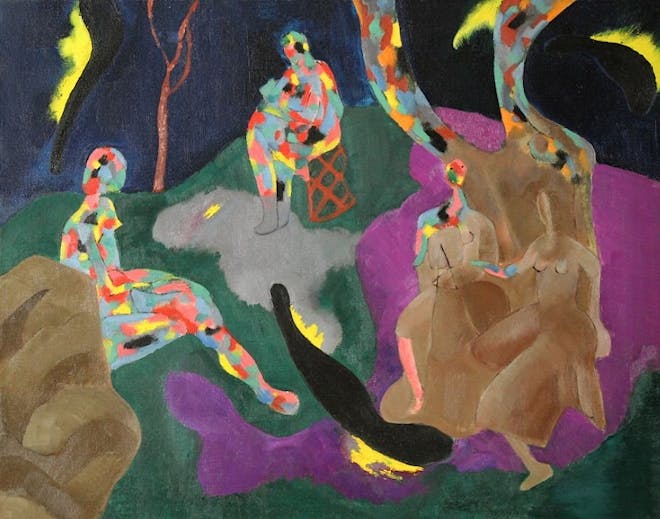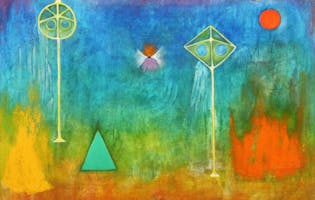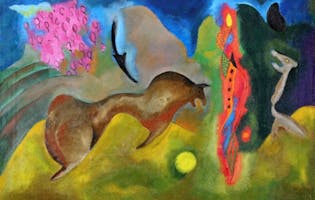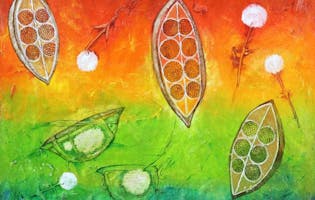
Peter Miller Story
Peter Miller: Forgotten Woman of American Modernism
Since the early summer days of 2020, Gratz Gallery & Conservation Studio has been working on the conservation and restoration of an unearthed estate of over 220 paintings by American Modernist painter, Peter Miller, born Henrietta Myers (1913 - 1996). It is with great honor that we reintroduce this exciting collection of works into the American art market, accompanied by a first-ever published, fully illustrated monograph on the artist. With this effort, it will be possible to resuscitate the work of this highly talented and versatile artist, one who, at long last, should be accorded the recognition within the history of American modernism that she never sought, but has long deserved. To learn about Peter Miller and browse the inventory, please explore the links below.
The Story of Peter Miller:
Peter Miller, born Henrietta Myers (1913–1996), was classified as an American Modernist and Surrealist painter. Miller was an artist, a philanthropist, a mystic, and a woman of endless passion for nature, spirituality, and exploration. Her artwork was infused and inspired by this immersion into the spiritual world. Every painting of Peter’s is a story, reflecting her heart and soul.
Henrietta took an interest in art at a very early age and applied for study at the Pennsylvania Academy of the Fine Arts in Philadelphia. On her application form, she wrote “I would rather fail at painting than succeed at anything else”. Miller lived by these words and remained a dedicated painter throughout her life. At the Academy, Myers studied under the American Impressionist Daniel Garber and, privately, with the Philadelphia modernist Arthur B. Carles. It was there that Henrietta met her future husband, C. Earle Miller, who was studying sculpture and printmaking. Upon the conclusion of their studies, Miller and Myers traveled to New Mexico. They both fell in love with the terrain and, in having established a close relationship with the Native American population there, considered it their spiritual home for the remainder of their lives. Henrietta changed her name to Peter, for she felt that collectors and critics would take her paintings more seriously if she were identified as male. She reportedly chose the name Peter because she liked the idea that it was derived from the Greek word for “rock” or “stone”. The first public showing of her pictures under this new name was at the Santa Fe Museum, today called the New Mexico Museum of Art.
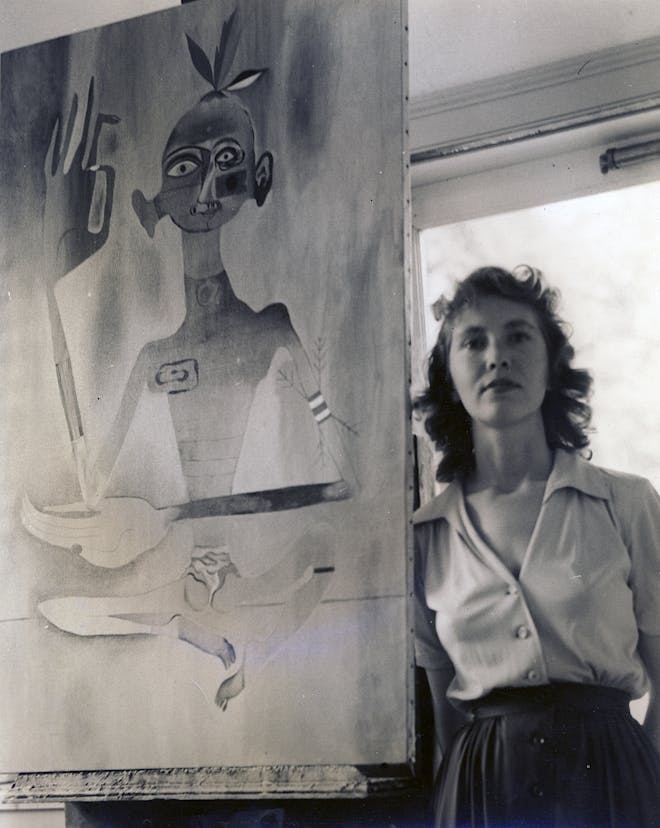
In both Pennsylvania and New Mexico, Miller built studios, where at first she continued to be inspired by the modern European masters whose works she admired, particularly Paul Klee and Joan Miró. She and her husband often traveled to Europe, where-likely through letters of introduction from Carles, they met Pablo Picasso, Henri Matisse, and, most notably for her, Miró himself, the great Spanish Surrealist painter who would have a profound influence on her throughout the 1930s and 1940s.
In the monograph published on the artist, it is said: "The influence of Miró on Miller’s work in this period is undeniable, a characteristic that was much in evidence when her paintings were shown in two exhibitions at the Julien Levy Gallery in New York, the premier showcase for Surrealism in America at the time, the first held in the spring of 1944, followed by a second in the fall of 1945. Several paintings included in these shows were unmistakably influenced by the Catalan master.
After Miller’s first show ended, a critic named Margaret Breuning, summarized her work as a “translation of fantasy and symbolism”. “Color is a particular asset in Miss Miller’s work,” she noted, “accentuating the linear patterns and giving congruity to designs, in a wide chromatic range that varies admirably with the particular theme.” Critics of Miller’s second show at the Julien Levy Gallery in 1945 saw a clear departure from her earlier reliance upon the work of Klee and Miró. The critic Henry McBride was relieved to find that the influence of these European sources had dissipated. “Peter Miller is now entirely American, and Western American at that.”
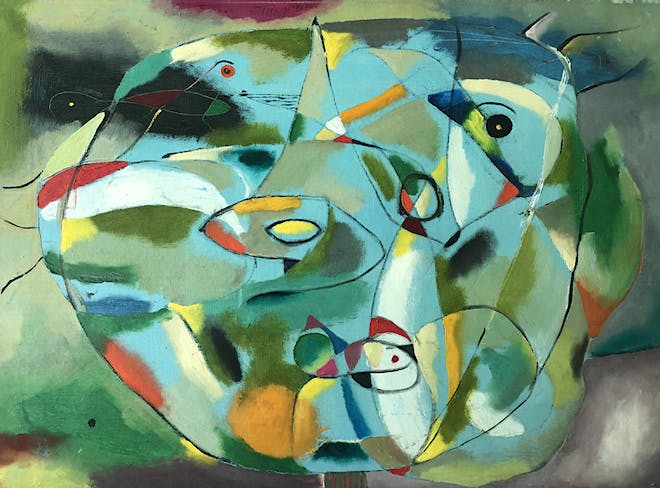
Peter and her husband Earle considered New Mexico their spiritual home, and in 1935 they built a ranch in Española, about 25 miles north of Santa Fe. Being neighbors of the indigenous people of the Tewa Pueblo, their crafts and religious beliefs fascinated Peter and the reliance of Native Americans upon the land and the animals permeated her work for most of her career. Their belief that all creatures could serve as intermediaries in communication with the spiritual world, inspired Miller to incorporate their symbols in her own paintings, along with signs drawn from indigenous pottery and local petroglyphs. Miller's intimate familiarity with the customs, rituals, and ceremonies, was assisted by her friendship with the writer Edith Warner and her friend Tilano Montoya, a Native American from the San Ildefonso Pueblo. Although Miller received a fair amount of critical acclaim from her shows in New York, she slowly withdrew from the art scene there, preferring instead to spend more time communing with nature at her homes in Pennsylvania and New Mexico.
As she approached the final decades of her life, Miller exhibited her work rarely, yet she continued to maintain a studio and actively painted well into her seventies. To those who knew her well, she shared her devotion to an almost mystical spiritualism, yet she remained staunchly individualistic, possessed with a boundless enthusiasm for life and her generosity was seemingly limitless.

Peter believed in exploring the magical realm; telepathy, synchronicity, alchemy, ESP, and tarot card reading. The concept of the collective subconscious captivated her curiosity and imagination. Peter and her husband Earle often hosted dinner parties at their farm in Chester County, Pennsylvania, inviting their guests to join them in storytelling and experimenting with the psychic phenomenon. Peter was a highly intellectual woman, her knowledge and interest in ancient cultures, history, and architecture is often reflected in her body of work. Steeped in the principles of theosophy, and being very familiar with the Transcendental Painting Group (TPG) of her peers, Peter Miller still remained independent in her artistic language and continued to explore her own unique vision of nature and spirituality.
“Miller’s technique was unique. In some of her paintings, she textured the ground to mimic canyon walls. In others, she used sgraffito and applied thin veils of color that she would then skillfully and partially rub off with rags. One small area of the canvas can contain six to eight different colors. The yellows and orange underneath provide a glow of spirituality to many of her canvases. The compositions are deliberate and she had a sophisticated knowledge of color. There are paintings within the painting, layers upon layers. Peter Miller’s work is extraordinary. She loved and worshipped nature. She believed all things are connected. She saw the power of a seed and what it can magically become. She honored the changes in the seasons and the power of nature." Paul Gratz - Art Dealer & Art Conservator
